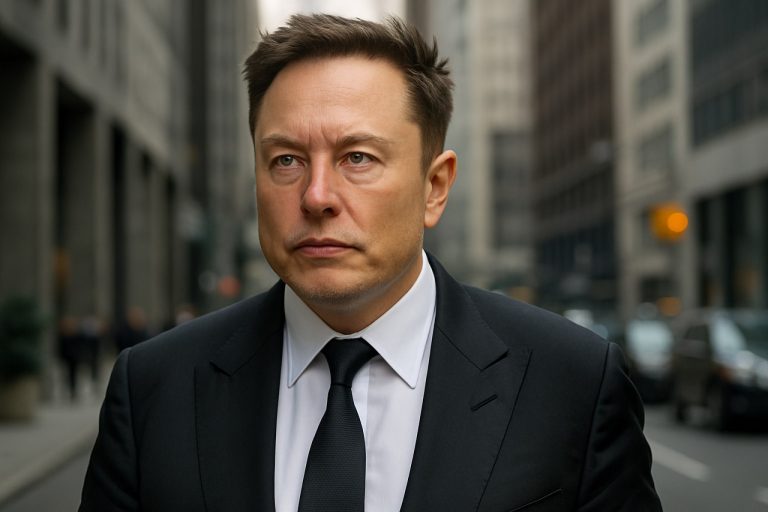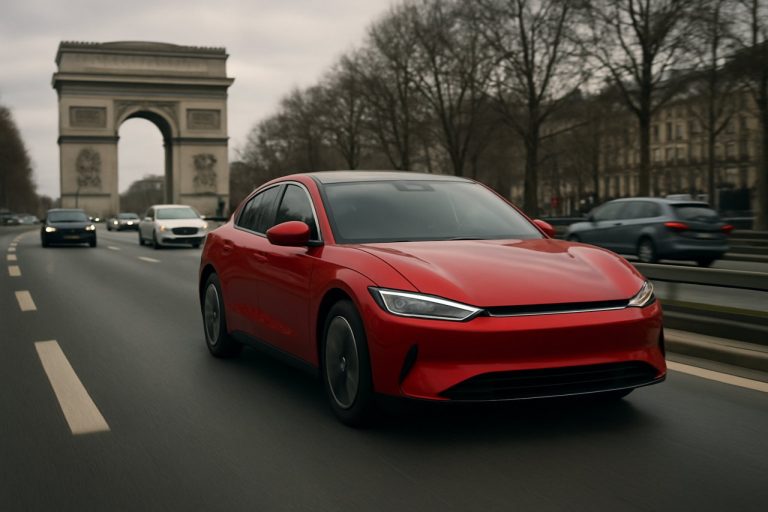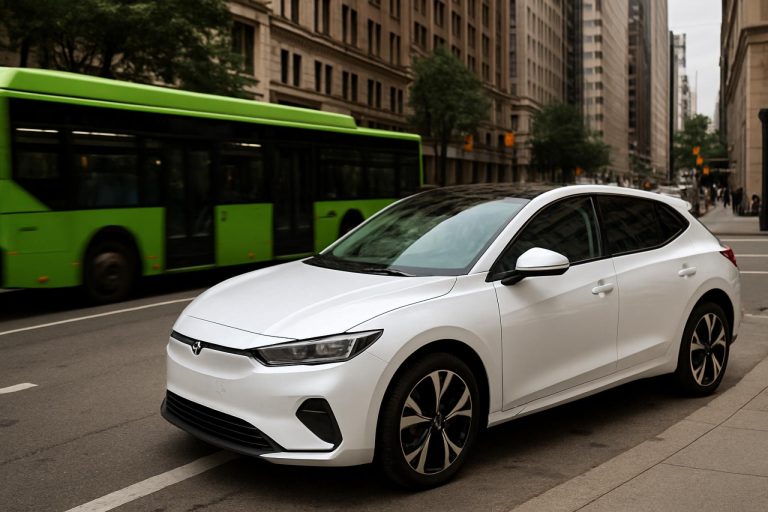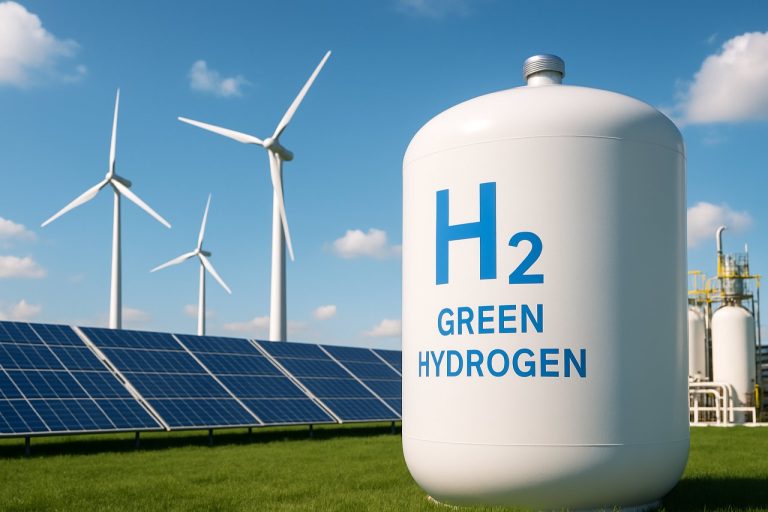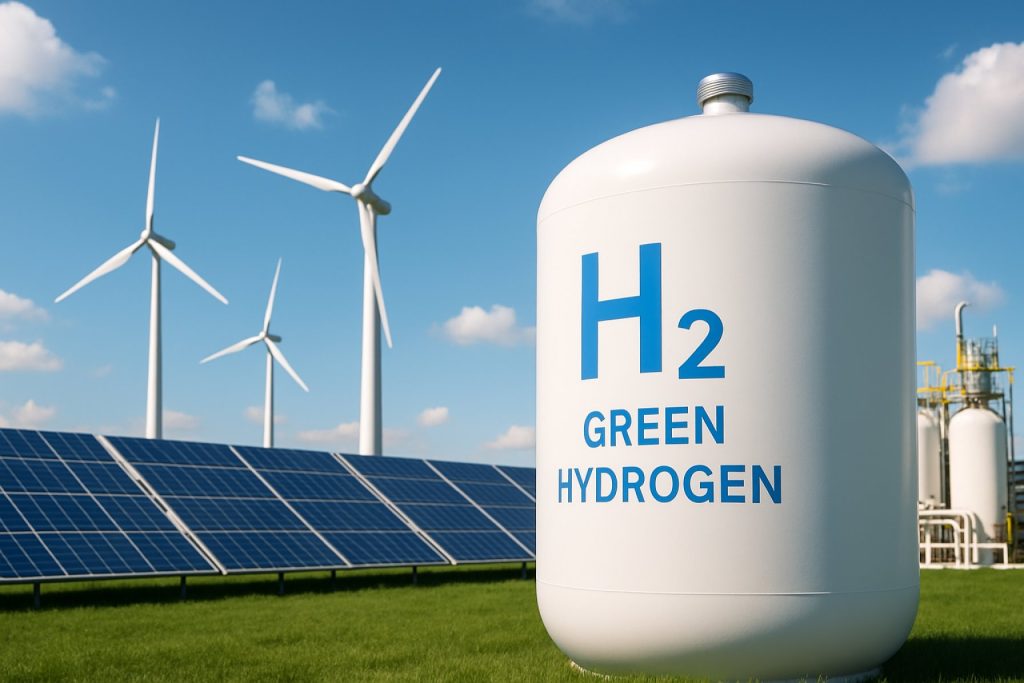
Green Hydrogen Production in 2025: The Dawn of a Clean Energy Revolution. Explore Market Growth, Game-Changing Technologies, and the Roadmap to a Net-Zero Future.
- Executive Summary: Green Hydrogen’s 2025 Market Inflection Point
- Global Market Size & Forecast (2025–2030): CAGR and Regional Leaders
- Key Drivers: Policy, Investment, and Decarbonization Mandates
- Electrolyzer Technologies: PEM, Alkaline, and Solid Oxide Innovations
- Major Players & Projects: Industry Leaders and Flagship Initiatives
- Cost Trajectories: CAPEX, OPEX, and Levelized Hydrogen Cost Trends
- Supply Chain & Infrastructure: Scaling Production and Distribution
- End-Use Sectors: Mobility, Industry, Power, and Export Markets
- Challenges & Barriers: Technology, Regulation, and Market Adoption
- Future Outlook: Strategic Roadmaps and 2030+ Market Scenarios
- Sources & References
Executive Summary: Green Hydrogen’s 2025 Market Inflection Point
Green hydrogen production is poised for a pivotal transformation in 2025, marking a significant inflection point for the global energy transition. As nations intensify decarbonization efforts, green hydrogen—produced via electrolysis powered by renewable energy—has emerged as a cornerstone technology for hard-to-abate sectors such as heavy industry, chemicals, and long-haul transport. In 2025, the sector is expected to shift from pilot and demonstration projects to the first wave of commercial-scale plants, driven by falling electrolyzer costs, expanding renewable capacity, and supportive policy frameworks.
Key industry players are accelerating deployment. Siemens Energy and thyssenkrupp are scaling up gigawatt-scale electrolyzer manufacturing, targeting both European and global markets. Nel ASA, a Norwegian pioneer, is expanding its alkaline and PEM electrolyzer production, aiming to supply large-scale projects in Europe and North America. ITM Power in the UK is ramping up its Gigafactory to meet surging demand, while Cummins is leveraging its global footprint to deliver electrolyzer systems for industrial and mobility applications.
According to the International Energy Agency, global installed electrolyzer capacity could reach 8–10 GW by the end of 2025, a tenfold increase from 2022 levels. This surge is underpinned by major projects such as the 20 MW Leuna plant in Germany (operated by Linde), the 100 MW Haru Oni project in Chile, and the 200 MW NEOM Green Hydrogen Project in Saudi Arabia, a joint venture involving Air Products, ACWA Power, and NEOM. These projects are expected to set new benchmarks for scale and cost, with levelized costs of green hydrogen projected to fall below $2/kg in regions with abundant renewables.
Policy momentum is also accelerating. The European Union’s REPowerEU plan targets 10 million tonnes of domestic green hydrogen production by 2030, with significant funding and regulatory support. The U.S. Inflation Reduction Act offers production tax credits, spurring investment in electrolyzer manufacturing and project development. China, meanwhile, is integrating green hydrogen into its national energy strategy, with state-owned enterprises such as Sinopec commissioning multi-hundred-MW projects.
By 2025, green hydrogen production will transition from early-stage deployment to a phase of rapid scale-up, catalyzed by industrial partnerships, technological innovation, and robust policy support. This inflection point will lay the foundation for green hydrogen’s role as a mainstream energy vector in the years ahead.
Global Market Size & Forecast (2025–2030): CAGR and Regional Leaders
The global green hydrogen production market is poised for significant expansion between 2025 and 2030, driven by decarbonization targets, falling renewable energy costs, and large-scale project announcements. As of 2025, the installed global electrolyzer capacity is expected to surpass 10 GW, a substantial increase from less than 1 GW in 2022. This rapid growth is underpinned by major investments and policy support in key regions, particularly Europe, the Middle East, Australia, and parts of Asia.
Europe is projected to remain the leading region for green hydrogen production through 2030, bolstered by the European Union’s ambitious targets under the REPowerEU plan, which aims for 10 million tonnes of domestic renewable hydrogen production by 2030. Several flagship projects are underway, including the 200 MW “Refhyne II” electrolyzer in Germany and the 20 MW “H2FUTURE” project in Austria, both involving major industry players such as Siemens Energy and Linde. The region’s leadership is further supported by strong policy frameworks and cross-border infrastructure initiatives.
The Middle East, particularly Saudi Arabia and the United Arab Emirates, is emerging as a global hub for large-scale green hydrogen exports. The NEOM project in Saudi Arabia, a joint venture between ACWA Power, Air Products, and NEOM, is set to deliver one of the world’s largest green hydrogen plants, targeting 650 tonnes per day of hydrogen production by 2026. Australia is also advancing rapidly, with companies like Fortescue and CWP Global developing gigawatt-scale projects aimed at both domestic use and export to Asia.
China is accelerating its green hydrogen ambitions, leveraging its dominance in solar and wind manufacturing. State-owned enterprises such as Sinopec are commissioning large electrolyzer plants, with the Kuqa project in Xinjiang targeting 20,000 tonnes of annual green hydrogen output. Meanwhile, Japan and South Korea are investing in supply chain partnerships and pilot projects to secure future imports and develop domestic production.
Market forecasts for 2025–2030 indicate a compound annual growth rate (CAGR) of 40–55% for global green hydrogen production capacity. By 2030, installed electrolyzer capacity could reach 100–150 GW worldwide, with Europe, the Middle East, and Australia accounting for the majority of new capacity. The market outlook remains highly dynamic, with further acceleration possible if policy incentives, technology costs, and infrastructure development continue to align.
Key Drivers: Policy, Investment, and Decarbonization Mandates
The acceleration of green hydrogen production in 2025 is fundamentally driven by a convergence of policy initiatives, investment flows, and decarbonization mandates across major economies. Governments are increasingly recognizing green hydrogen—produced via electrolysis powered by renewable energy—as a cornerstone for achieving net-zero targets, particularly in hard-to-abate sectors such as heavy industry, chemicals, and long-haul transport.
In the European Union, the European Commission has set ambitious targets under its Hydrogen Strategy, aiming for 10 million tonnes of domestic renewable hydrogen production by 2030. The EU’s “Fit for 55” package and the REPowerEU plan are channeling billions of euros into electrolyzer deployment, infrastructure, and cross-border hydrogen corridors. National governments, such as Germany and Spain, are supplementing these efforts with their own funding and regulatory frameworks, including auctions and Contracts for Difference (CfDs) to bridge the cost gap between green and conventional hydrogen.
In the United States, the U.S. Department of Energy is spearheading the Hydrogen Shot initiative, targeting a reduction in the cost of clean hydrogen to $1 per kilogram within a decade. The Inflation Reduction Act (IRA) provides production tax credits of up to $3/kg for green hydrogen, catalyzing a surge in project announcements and investment commitments. Major energy companies such as Air Liquide and Plug Power are scaling up electrolyzer manufacturing and project development, with several gigawatt-scale plants scheduled to come online in 2025 and beyond.
Asia-Pacific is also emerging as a key region, with countries like Japan, South Korea, and Australia implementing national hydrogen strategies. Australia, leveraging its abundant renewable resources, is supporting large-scale export-oriented projects through agencies such as Australian Renewable Energy Agency (ARENA). Japanese conglomerates including Mitsubishi Heavy Industries and Toshiba are investing in hydrogen supply chains and fuel cell technologies, while South Korea’s Hyundai Heavy Industries is advancing hydrogen-powered mobility and infrastructure.
Private sector investment is surging, with global electrolyzer manufacturing capacity expected to exceed 60 GW by 2025, according to industry projections. Leading electrolyzer manufacturers such as Nel ASA, thyssenkrupp, and Siemens Energy are expanding production lines and forming strategic partnerships to meet anticipated demand. These developments are underpinned by growing corporate decarbonization mandates, as companies in steel, ammonia, and refining sectors commit to low-carbon hydrogen adoption to comply with tightening emissions regulations and ESG expectations.
Looking ahead, the interplay of robust policy support, escalating investment, and mandatory decarbonization targets is expected to drive exponential growth in green hydrogen production capacity through 2025 and set the stage for further scale-up in subsequent years.
Electrolyzer Technologies: PEM, Alkaline, and Solid Oxide Innovations
Electrolyzer technologies are at the heart of green hydrogen production, with Proton Exchange Membrane (PEM), Alkaline, and Solid Oxide Electrolyzers (SOEC) representing the primary approaches. As of 2025, the global push for decarbonization and energy security is accelerating innovation and deployment across all three technologies, with significant investments and scale-up plans from leading manufacturers.
PEM Electrolyzers are gaining traction due to their rapid response times, compact design, and ability to operate at variable loads, making them suitable for integration with intermittent renewable energy sources. Major players such as Siemens Energy and Nel Hydrogen are expanding their PEM electrolyzer manufacturing capacities. For instance, Siemens Energy is ramping up its gigawatt-scale production facilities in Germany, aiming to meet the surging demand for green hydrogen in Europe and beyond. Nel Hydrogen is similarly scaling up its Herøya plant in Norway, targeting cost reductions through automation and economies of scale.
Alkaline Electrolyzers remain the most mature and widely deployed technology, favored for their lower capital costs and proven long-term reliability. Companies like thyssenkrupp and Cummins are leading the commercialization of large-scale alkaline systems. thyssenkrupp has announced multiple multi-hundred-megawatt projects, including installations in the Middle East and Australia, leveraging its modular alkaline platform. Cummins is also expanding its global footprint, with new manufacturing sites in Europe and North America to support growing project pipelines.
Solid Oxide Electrolyzers (SOEC) are emerging as a high-efficiency option, particularly attractive for industrial applications where high-temperature waste heat is available. Bloom Energy is a notable innovator, deploying commercial SOEC systems that claim higher electrical efficiency compared to conventional electrolyzers. In 2025, Bloom Energy is advancing pilot projects in the U.S. and Europe, focusing on integration with steel and chemical industries.
Looking ahead, the next few years are expected to see rapid cost declines and performance improvements across all electrolyzer types, driven by manufacturing scale-up, supply chain localization, and ongoing R&D. Industry bodies such as the International Association for Hydrogen Energy forecast that by 2030, electrolyzer costs could fall below $300/kW, with system efficiencies and lifetimes continuing to improve. The convergence of technology innovation and policy support positions electrolyzer technologies as a cornerstone of the global green hydrogen economy through 2025 and beyond.
Major Players & Projects: Industry Leaders and Flagship Initiatives
The global green hydrogen sector is rapidly evolving, with major industry players and flagship projects shaping the landscape as of 2025 and beyond. Green hydrogen—produced via electrolysis powered by renewable energy—has attracted significant investment from energy giants, technology firms, and governments aiming to decarbonize hard-to-abate sectors.
Among the most prominent companies, Siemens Energy stands out for its advanced electrolyzer technology and involvement in large-scale projects across Europe and the Middle East. Siemens Energy is a key partner in the Haru Oni project in Chile, which aims to produce green hydrogen and synthetic fuels for export. Similarly, Nel ASA, a Norwegian company specializing in water electrolyzers, has expanded its manufacturing capacity to meet surging demand, supplying equipment for projects in Europe, the U.S., and Asia.
In the Middle East, NEOM—a Saudi Arabian smart city initiative—has partnered with Air Products and ACWA Power to develop one of the world’s largest green hydrogen plants. Scheduled to begin production in 2026, the NEOM project is designed to produce up to 600 tons of green hydrogen per day, primarily for conversion into ammonia for global export.
Europe remains a hub for flagship initiatives. ENGIE is leading several projects, including the HyNetherlands project, which targets industrial-scale green hydrogen production for decarbonizing local industry and transport. Iberdrola, a Spanish utility, has commissioned one of Europe’s largest green hydrogen plants in Puertollano, Spain, supplying renewable hydrogen to the fertilizer sector.
In the Asia-Pacific region, Toshiba Energy Systems & Solutions and Tokyo Gas are advancing pilot projects in Japan, while Fortescue in Australia is investing heavily in green hydrogen production and export infrastructure, aiming to become a major global supplier.
Looking ahead, these industry leaders are scaling up electrolyzer manufacturing, forging cross-sector partnerships, and securing long-term offtake agreements. The next few years will see the commissioning of several gigawatt-scale projects, with the International Energy Agency projecting global green hydrogen production capacity to exceed 20 GW by 2030, driven by these flagship initiatives and the continued commitment of major players.
Cost Trajectories: CAPEX, OPEX, and Levelized Hydrogen Cost Trends
The cost structure of green hydrogen production is undergoing rapid transformation as the sector scales up in 2025 and beyond. The two primary cost components—capital expenditure (CAPEX) and operational expenditure (OPEX)—are both experiencing downward pressure, driven by technological innovation, manufacturing scale, and renewable energy cost declines. These trends are directly impacting the levelized cost of hydrogen (LCOH), a key metric for project viability and competitiveness.
In 2025, the global weighted average CAPEX for large-scale alkaline and proton exchange membrane (PEM) electrolyzers is estimated to range between $500 and $900 per kilowatt, a significant reduction from values above $1,200/kW just a few years prior. Major electrolyzer manufacturers such as Nel ASA, thyssenkrupp, and Cummins are expanding gigawatt-scale production facilities, leveraging automation and modular designs to further drive down equipment costs. For example, Nel ASA has announced plans for a fully automated electrolyzer factory targeting multi-gigawatt annual output, aiming to halve current CAPEX levels within the next few years.
OPEX, dominated by the cost of renewable electricity, is also trending downward. The continued decline in solar and wind power purchase agreement (PPA) prices—often below $20/MWh in favorable regions—enables green hydrogen producers to secure low-cost, long-term energy supply. Companies like ENGIE and Acciona are integrating large-scale renewables directly with electrolyzer projects, optimizing operational profiles and reducing curtailment losses.
As a result, the LCOH for green hydrogen in 2025 is converging toward the $2–$4 per kilogram range in regions with abundant renewables and supportive policy frameworks. This marks a substantial improvement from the $4–$6/kg range typical in 2020–2022. Industry leaders such as Siemens Energy and ITM Power are targeting sub-$2/kg LCOH by the late 2020s, contingent on further scale-up and continued cost reductions in both electrolyzers and renewable electricity.
Looking ahead, the outlook for green hydrogen cost trajectories remains positive. The combination of mass manufacturing, supply chain localization, and learning curve effects is expected to push CAPEX below $400/kW by 2030. Simultaneously, OPEX will benefit from grid integration, digital optimization, and falling renewable costs. These trends position green hydrogen to become cost-competitive with fossil-based hydrogen in an increasing number of markets within the next few years, accelerating adoption across industry, mobility, and energy sectors.
Supply Chain & Infrastructure: Scaling Production and Distribution
The global push to decarbonize heavy industry and transport is accelerating the scale-up of green hydrogen production and its supporting supply chain infrastructure. As of 2025, the sector is transitioning from pilot and demonstration projects to early commercial-scale plants, with a focus on expanding electrolyzer manufacturing, renewable power integration, and distribution networks.
Major electrolyzer manufacturers are ramping up capacity to meet surging demand. Nel ASA, a Norwegian company, is expanding its Herøya facility, targeting an annual production capacity of 1 GW of alkaline electrolyzers, with plans to scale further. Similarly, Siemens Energy is increasing its PEM electrolyzer output, aiming for multi-gigawatt annual production by the mid-2020s. thyssenkrupp is also scaling up its alkaline water electrolysis technology, supporting large-scale projects in Europe and the Middle East.
On the project development front, several gigawatt-scale green hydrogen plants are under construction or in advanced planning. Air Liquide is building a 200 MW electrolyzer in Normandy, France, with commissioning expected in 2026, while Linde is developing multiple projects in the US and Europe, integrating renewable power sources. In the Middle East, NEOM in Saudi Arabia is advancing a $5 billion green hydrogen facility, targeting 650 tons per day of production by 2026, with partners including ACWA Power and Air Products.
Supply chain bottlenecks remain a challenge, particularly in the availability of renewable electricity, critical minerals for electrolyzer manufacturing, and specialized storage and transport infrastructure. To address these, companies are investing in vertically integrated supply chains. For example, Iberdrola is developing dedicated solar and wind farms to power its hydrogen projects in Spain and Portugal, while ENGIE is piloting hydrogen pipeline and storage solutions in Europe and Australia.
Looking ahead, the International Energy Agency projects global installed electrolyzer capacity could reach 45-50 GW by 2030, up from less than 1 GW in 2020, if current policy and investment trends continue. The next few years will be critical for scaling up manufacturing, standardizing infrastructure, and establishing reliable supply chains to support the anticipated growth in green hydrogen production and distribution.
End-Use Sectors: Mobility, Industry, Power, and Export Markets
Green hydrogen production is rapidly gaining momentum as a cornerstone of decarbonization strategies across multiple end-use sectors, including mobility, industry, power generation, and export markets. As of 2025, the global landscape is characterized by a surge in project announcements, scaling of electrolyzer manufacturing, and the emergence of cross-sectoral partnerships aimed at accelerating adoption.
In the mobility sector, green hydrogen is increasingly being deployed for fuel cell electric vehicles (FCEVs), particularly in heavy-duty transport, buses, and trains. Major automotive manufacturers such as Toyota Motor Corporation and Hyundai Motor Company are expanding their hydrogen vehicle portfolios, while countries like Germany and South Korea are investing in hydrogen refueling infrastructure. For example, Alstom has delivered hydrogen-powered trains for commercial service in Europe, demonstrating the viability of hydrogen in rail applications.
Within industry, green hydrogen is being adopted as a feedstock for ammonia and methanol production, as well as for direct reduction of iron in steelmaking. Companies such as thyssenkrupp AG and Air Liquide are leading pilot projects to replace fossil-based hydrogen with green alternatives in industrial processes. The European Union’s “Hydrogen Strategy” and initiatives like the Hydrogen Europe alliance are driving large-scale demonstration projects, with several gigawatt-scale electrolyzer plants under development.
In the power sector, green hydrogen is being explored for grid balancing, seasonal energy storage, and as a fuel for gas turbines. Utilities such as Siemens Energy and Uniper SE are piloting hydrogen blending in natural gas networks and retrofitting power plants to operate on hydrogen. These efforts are expected to support the integration of variable renewable energy sources and enhance grid resilience.
The export market for green hydrogen is also emerging, with countries rich in renewable resources—such as Australia, Chile, and the United Arab Emirates—positioning themselves as future exporters. Companies like Fortescue Metals Group and ACWA Power are investing in large-scale green hydrogen and ammonia projects aimed at supplying international markets, particularly in Europe and East Asia.
Looking ahead to the next few years, the outlook for green hydrogen production is marked by rapid capacity expansion, declining electrolyzer costs, and increasing policy support. The International Energy Agency projects that global electrolyzer capacity could reach 100 GW by 2030, with significant progress expected by 2025 as more projects move from planning to execution. Cross-sector collaboration and international trade agreements will be critical in scaling up production and unlocking the full potential of green hydrogen across end-use sectors.
Challenges & Barriers: Technology, Regulation, and Market Adoption
Green hydrogen production is poised for significant growth in 2025 and the following years, but the sector faces a range of challenges and barriers across technology, regulation, and market adoption. These obstacles must be addressed to enable green hydrogen to fulfill its potential as a cornerstone of the global energy transition.
Technological Challenges remain a primary concern. The most common method for green hydrogen production is water electrolysis powered by renewable energy. However, electrolyzer technologies—such as proton exchange membrane (PEM), alkaline, and solid oxide—are still maturing. Current electrolyzer systems face issues with efficiency, durability, and high capital costs. Leading manufacturers like Nel ASA, Siemens Energy, and thyssenkrupp are scaling up production and investing in R&D to improve performance and reduce costs, but widespread deployment is still hampered by supply chain constraints and the need for further innovation.
Regulatory and Policy Barriers are also significant. The definition of “green” hydrogen varies across jurisdictions, affecting eligibility for subsidies and incentives. The European Union’s Renewable Energy Directive and the U.S. Inflation Reduction Act have introduced frameworks to support green hydrogen, but implementation details and certification schemes are still evolving. This regulatory uncertainty complicates investment decisions and project planning. Industry bodies such as the Hydrogen Council and International Energy Agency are working with governments to harmonize standards, but progress is incremental.
Market Adoption Barriers include the high cost of green hydrogen relative to fossil-based alternatives. As of 2025, green hydrogen production costs typically range from $3 to $6 per kilogram, compared to $1–$2 per kilogram for grey hydrogen. Achieving cost parity depends on further reductions in renewable electricity prices, electrolyzer costs, and the development of large-scale projects. Companies such as Air Liquide and Linde are investing in demonstration plants and supply chain infrastructure, but offtake agreements and long-term demand signals remain limited.
Additionally, infrastructure for storage, transport, and distribution is underdeveloped. Hydrogen’s low volumetric energy density and the need for specialized pipelines or liquefaction facilities add complexity and cost. Industry leaders are collaborating on pilot projects and regional hydrogen hubs, but widespread adoption will require coordinated investment and policy support.
In summary, while 2025 will see continued momentum in green hydrogen production, overcoming technological, regulatory, and market barriers is essential for the sector’s long-term viability and scale-up.
Future Outlook: Strategic Roadmaps and 2030+ Market Scenarios
The outlook for green hydrogen production in 2025 and the years immediately following is characterized by rapid scaling, strategic investments, and the emergence of global supply chains. As governments and industry leaders intensify decarbonization efforts, green hydrogen—produced via electrolysis powered by renewable energy—has become a central pillar in energy transition roadmaps. The European Union, for example, has set ambitious targets to install at least 40 GW of renewable hydrogen electrolyzers by 2030, with a significant portion expected to be operational or under construction by 2025. This is supported by the Hydrogen4EU initiative, which brings together major energy companies and policymakers to coordinate infrastructure and regulatory frameworks.
On the corporate front, leading electrolyzer manufacturers such as Nel ASA, Siemens Energy, and thyssenkrupp are scaling up gigawatt-scale production facilities. Nel ASA has announced plans to expand its Herøya plant in Norway, aiming for annual electrolyzer production capacity exceeding 1 GW by 2025. Siemens Energy is similarly ramping up its PEM electrolyzer output, targeting large-scale projects in Germany, the Middle East, and Australia. thyssenkrupp is delivering multi-hundred-megawatt electrolyzer systems for industrial decarbonization, particularly in steel and chemical sectors.
Major energy companies are also investing heavily in green hydrogen hubs. Shell is developing the Holland Hydrogen I project in the Netherlands, which is set to become one of Europe’s largest renewable hydrogen plants upon its expected commissioning in 2025. BP and Ørsted are advancing similar projects in the UK and Denmark, respectively, with integrated wind-to-hydrogen value chains. In the Middle East, NEOM in Saudi Arabia is constructing a $5 billion green hydrogen facility, targeting large-scale exports by the latter half of the decade.
Despite these advances, challenges remain. The cost of green hydrogen production is still significantly higher than that of grey hydrogen, primarily due to electrolyzer costs and renewable electricity prices. However, industry bodies such as the Hydrogen Council project that with continued scale-up, technological innovation, and supportive policy frameworks, green hydrogen could achieve cost parity with fossil-based hydrogen in key markets before 2030.
In summary, 2025 will mark a pivotal year for green hydrogen, with gigawatt-scale projects moving from planning to execution, supply chains maturing, and the groundwork laid for a global market that could transform energy, industry, and transport sectors by 2030 and beyond.
Sources & References
- Siemens Energy
- Nel ASA
- ITM Power
- International Energy Agency
- Linde
- ACWA Power
- NEOM
- Fortescue
- CWP Global
- European Commission
- Air Liquide
- Australian Renewable Energy Agency (ARENA)
- Mitsubishi Heavy Industries
- Hyundai Heavy Industries
- Nel ASA
- Siemens Energy
- Bloom Energy
- Acciona
- Air Liquide
- Toyota Motor Corporation
- Hyundai Motor Company
- Alstom
- Hydrogen Europe
- Fortescue Metals Group
- ACWA Power
- Hydrogen4EU
- Shell
- BP
- Hydrogen Council
